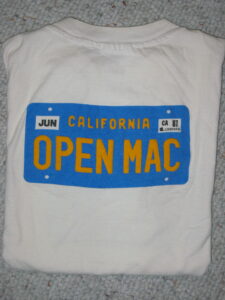
The Future Future may well bring us an “Open Car.” The Past Future brought us an “Open Mac.”
By mid-1985 it was clear that Apple’s 1984-introduced Macintosh was facing some sales and adoption challenges, and thus so was Apple itself. Founder Steve Jobs was forced out by the CEO he recruited, John Sculley. Jean-Louis Gassée was brought in as VP of Product Development.
According to Gassée himself, one of his ways to improve things was “an ‘open’ Mac with interface card slots and color display capabilities.” The interface cards in particular were “open” in two ways: you had to open the Mac to put them in, and they were based on an open standard that any hardware developer could build to (in this case, NuBus).
Steve remains the ultimate visionary, but his lifelong insistence on “closed” systems (“walled gardens”) was a negative in an era where the “open” IBM PC standard was becoming the choice for business rapidly moving to the world of personal computers.
An important part of just about any engineering effort at Apple was the project t-shirt. Gassée went even further with the Open Mac, outfitting his car with a custom OPEN MAC license plate. And then making the t-shirts!

The result of Gassée’s efforts was the very successful Macintosh II, the first open Mac. As Steve’s heritage with Apple faded, the Mac would become even more open, to the extent that the hardware specs and MacOS operating system were licensed to third parties, who went on to create Macintosh “clones.”
Unlike with the IBM PC, the Macintosh cloning effort was never successful. It was ultimately canceled by Steve upon his return to the company in 1997. And Apple products have been pretty much “closed” ever since.
Open versus closed hardware and software remains a major discussion item in the technology world to this day. As cars become more and more pieces of technology, it will be interesting to see to what extent they too go down the open road.